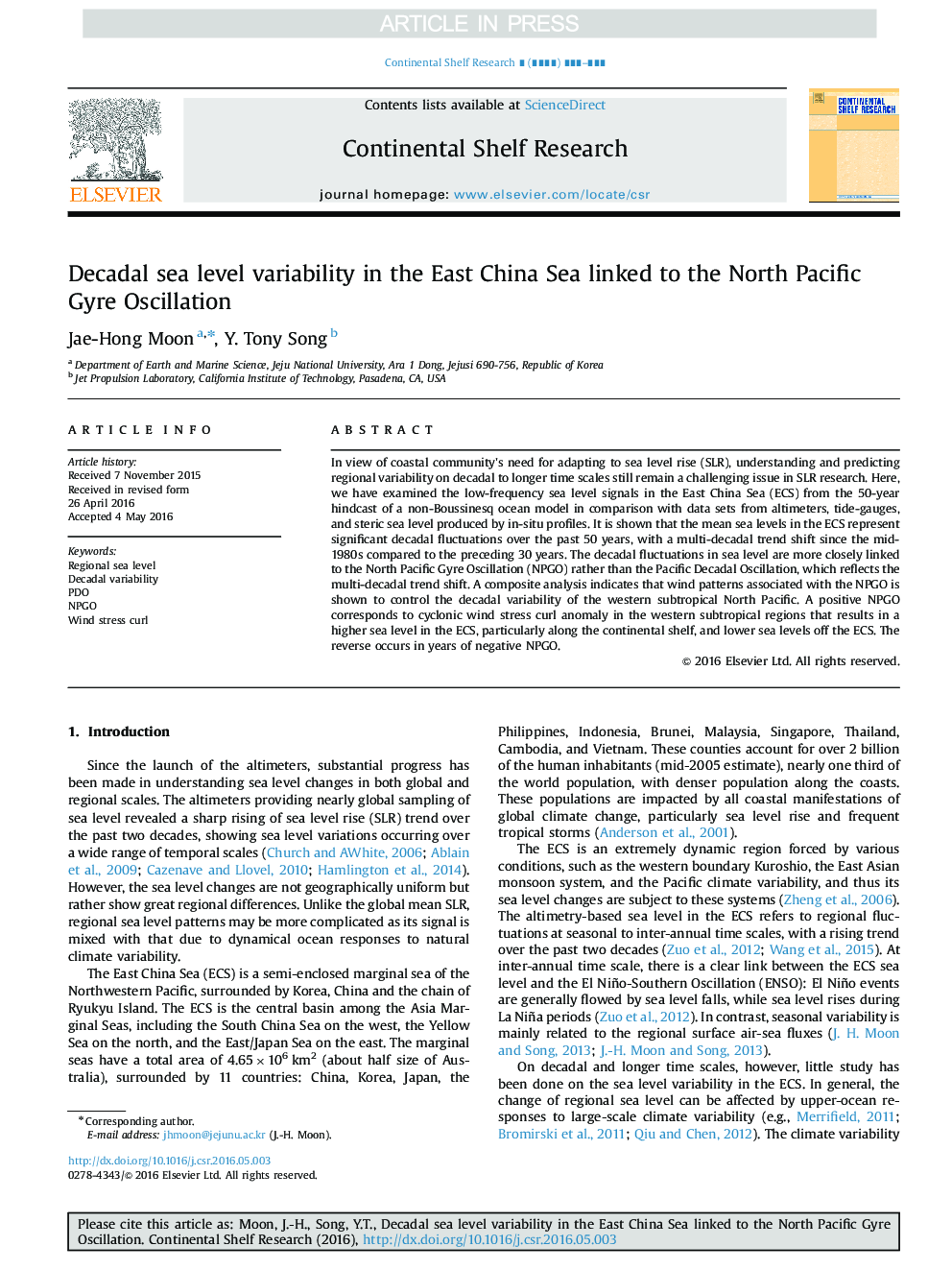| Article ID | Journal | Published Year | Pages | File Type |
|---|---|---|---|---|
| 5764407 | Continental Shelf Research | 2017 | 8 Pages |
Abstract
In view of coastal community's need for adapting to sea level rise (SLR), understanding and predicting regional variability on decadal to longer time scales still remain a challenging issue in SLR research. Here, we have examined the low-frequency sea level signals in the East China Sea (ECS) from the 50-year hindcast of a non-Boussinesq ocean model in comparison with data sets from altimeters, tide-gauges, and steric sea level produced by in-situ profiles. It is shown that the mean sea levels in the ECS represent significant decadal fluctuations over the past 50 years, with a multi-decadal trend shift since the mid-1980s compared to the preceding 30 years. The decadal fluctuations in sea level are more closely linked to the North Pacific Gyre Oscillation (NPGO) rather than the Pacific Decadal Oscillation, which reflects the multi-decadal trend shift. A composite analysis indicates that wind patterns associated with the NPGO is shown to control the decadal variability of the western subtropical North Pacific. A positive NPGO corresponds to cyclonic wind stress curl anomaly in the western subtropical regions that results in a higher sea level in the ECS, particularly along the continental shelf, and lower sea levels off the ECS. The reverse occurs in years of negative NPGO.
Related Topics
Physical Sciences and Engineering
Earth and Planetary Sciences
Geology
Authors
Jae-Hong Moon, Y. Tony Song,
